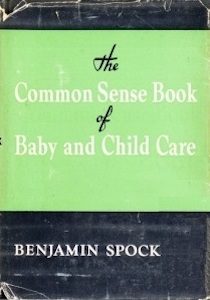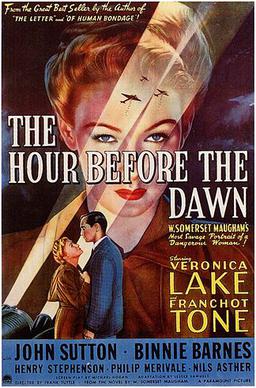
During the World War II era, America's pop culture reflected the tumultuous times with a blend of patriotism, escapism, and social commentary across various mediums, including books, movies, music, and fine arts.
In literature, novels such as "The Grapes of Wrath" by John Steinbeck captured the struggles of the Great Depression while also addressing themes of social injustice and the resilience of the human spirit. Authors like Ernest Hemingway and F. Scott Fitzgerald continued to explore themes of love, loss, and disillusionment in their works, providing a sense of solace and reflection amidst the chaos of war.
In cinema, Hollywood produced many films that entertained and informed audiences. War-themed movies such as "Casablanca," "Mrs. Miniver," and "Sergeant York" depicted heroism, sacrifice, and the moral complexities of conflict. At the same time, comedies like "Arsenic and Old Lace" provided much-needed comic relief. Animated films from Disney, such as "Dumbo" and "Bambi," offered moments of innocence and whimsy amidst the grim realities of war.
Music during this era served as a powerful form of expression and unity. Big band music dominated the airwaves, with iconic figures like Glenn Miller and Duke Ellington providing the soundtrack to the war effort. Songs like "Boogie Woogie Bugle Boy" and "Sentimental Journey" lifted spirits and boosted morale. At the same time, patriotic anthems like "God Bless America" and "The Star-Spangled Banner" instilled a sense of national pride.
In the world of fine arts, American artists grappled with the impact of war on society and culture. Artists like Edward Hopper captured the loneliness and isolation of urban life, while others, such as Norman Rockwell, depicted scenes of American life with warmth and nostalgia.
Overall, America's pop culture during the World War II era reflected the complexities of the times, providing both escapism and social commentary while rallying the nation behind the war effort and celebrating the enduring spirit of the American people.

 Dr. Spock's Baby and Child Care (Originally published in 1946)
by
Benjamin Spock
A standard manual that has been frequently revised. This is the 1985 edition.
Dr. Spock's Baby and Child Care (Originally published in 1946)
by
Benjamin Spock
A standard manual that has been frequently revised. This is the 1985 edition.
 The Hour Before the Dawn (Originally published in 1942)
by
W. Somerset Maugham
In 1923 in England, General Hetherton is instructing his grandson Jim to shoot a rifle. Jim's dog runs in the way and Jim accidentally kills him. The incident affects him deeply and he becomes a pacifist.
Years later, at the commencement of World War II, Jim is headmaster at a school and has fallen in love with a young Austrian woman, Dora Bruckman, who works for his sister-in-law, May. He is unaware that Dora is a Nazi spy. She meets regularly with her supervisors in London, Mrs. Müller and Kurt van der Breughel, who are posing as Austrian refugees.
The Hour Before the Dawn (Originally published in 1942)
by
W. Somerset Maugham
In 1923 in England, General Hetherton is instructing his grandson Jim to shoot a rifle. Jim's dog runs in the way and Jim accidentally kills him. The incident affects him deeply and he becomes a pacifist.
Years later, at the commencement of World War II, Jim is headmaster at a school and has fallen in love with a young Austrian woman, Dora Bruckman, who works for his sister-in-law, May. He is unaware that Dora is a Nazi spy. She meets regularly with her supervisors in London, Mrs. Müller and Kurt van der Breughel, who are posing as Austrian refugees.
 Put Out More Flags
by
Evelyn Waugh
Put Out More Flags is Waugh's superb send-up of "smart" England, the bohemian crowd, as World War II approaches. Making a return appearance, Basil Seal this time insinuates himself into an odd but profitable role in the country's mobilization.
Upper-class scoundrel Basil Seal, mad, bad, and dangerous to know, creates havoc wherever he goes, much to the despair of the three women in his life - his sister, his mother, and his mistress. When Neville Chamberlain declares war on Germany, it seems the perfect opportunity for more action and adventure. So Basil follows the call to arms and sets forth to enjoy his finest hour - as a war hero.
Put Out More Flags
by
Evelyn Waugh
Put Out More Flags is Waugh's superb send-up of "smart" England, the bohemian crowd, as World War II approaches. Making a return appearance, Basil Seal this time insinuates himself into an odd but profitable role in the country's mobilization.
Upper-class scoundrel Basil Seal, mad, bad, and dangerous to know, creates havoc wherever he goes, much to the despair of the three women in his life - his sister, his mother, and his mistress. When Neville Chamberlain declares war on Germany, it seems the perfect opportunity for more action and adventure. So Basil follows the call to arms and sets forth to enjoy his finest hour - as a war hero.


 Lifeboat
When an their vessel is torpedoed in the Atlantic Ocean during WWII, eight survivors find refuge in a lifeboat. Short on food and water, their situation is further complicated when they rescue a crew member from the German U-boat that sank their ship.
Lifeboat
When an their vessel is torpedoed in the Atlantic Ocean during WWII, eight survivors find refuge in a lifeboat. Short on food and water, their situation is further complicated when they rescue a crew member from the German U-boat that sank their ship.
 The bells of St. Mary's
Parish priest Father O'Malley is sent to revive the financially ailing parochial school. The easy-going O'Malley is immediately at odds with no-nonsense Sister Benedict on how to educate children. Beyond their delightful battle of wits lies a bigger problem. The skinflint businessman next door wants St. Mary's condemned and only a miracle can save it now.
The bells of St. Mary's
Parish priest Father O'Malley is sent to revive the financially ailing parochial school. The easy-going O'Malley is immediately at odds with no-nonsense Sister Benedict on how to educate children. Beyond their delightful battle of wits lies a bigger problem. The skinflint businessman next door wants St. Mary's condemned and only a miracle can save it now.
 Meet John Doe
"Gary Cooper portrays a former baseball player whose misfortunes have changed his life. Barbara Stanwyck, a news reporter, interviews "John Doe" (Cooper). Her report falls into the hands of a crooked politician who exploits "John Doe" by making him a good will ambassador in a phony political drive, leaving Cooper on the brink of suicide. This film represents director Frank Capra at his best."
Meet John Doe
"Gary Cooper portrays a former baseball player whose misfortunes have changed his life. Barbara Stanwyck, a news reporter, interviews "John Doe" (Cooper). Her report falls into the hands of a crooked politician who exploits "John Doe" by making him a good will ambassador in a phony political drive, leaving Cooper on the brink of suicide. This film represents director Frank Capra at his best."




Florida Atlantic University Libraries
777 Glades Road
Boca Raton, FL 33431
(561) 297-6911
